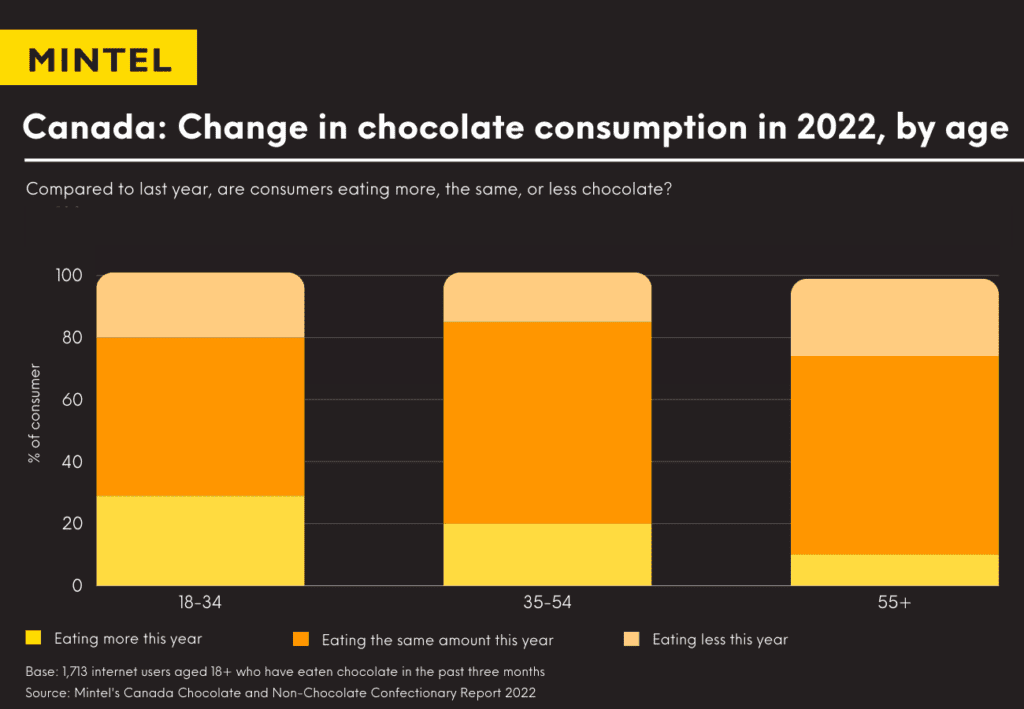Industry Insights: Mintel has Researched Chocolate Consumption in Canada
Chocolate is undoubtedly a staple sweet treat in countries around the world, but are our chocolate consumption behaviours changing over time?
Expert analysts at Mintel.com have researched chocolate consumption behaviours in Canada and offered some insights.
- Chocolate consumption in Canada has remained stable, with only one in five consumers eating more or less chocolate than the previous year.
- While 9 in 10 Canadians eating chocolate regularly might seem like a large portion of the population, it is comparatively one of the world’s smaller chocolate consumers.
- Canadian consumers primarily appreciate the convenience of chocolate snacks, although some prefer to choose more healthy options.
- More than half of those eating less chocolate and candy in Canada in 2022 have consciously made an effort to reduce their sugar intake.
- On the other hand, two-thirds of those eating more chocolate and candy in 2022 did so as they are snacking more at home.

What about other countries?
- American chocolate consumption is slightly lower than that of Brits.
- The US chocolate confectionery market is relatively stable, with two-thirds of Americans purchasing chocolate as a treat, and one-third purchasing chocolate as an energy boost.
- Mintel forecasts that the UK chocolate market sales are due to reach £7 billion in 2023.
- 95% of Brits eat chocolate, with four in five Brits eating chocolate once a week or more.
- However, this has slightly decreased since 2022, due to UK’s tighter restrictions on HFSS products impacting chocolate visibility.
- In 2023, three-quarters of Germans eat chocolate at least once a week, with more than 10% eating chocolate once a day or more.
- Over 50% of Germans eat chocolate to improve their mood.
- German consumers under 44 are more inclined to purchase single-serve bars, while older consumers prefer chocolate blocks.
Richard Caines – Senior Food & Drink Analyst at Mintel, added: “In countries where chocolate is a daily indulgence for most, as well as in those countries where it is enjoyed occasionally, the levels and frequency of chocolate consumption have remained steady in recent years. This signals that there is a certain loyalty and consistency in chocolate consumption, and populations are unlikely to drastically change in their chocolate consumption habits.”
For more details and statistics, check out the full report.

